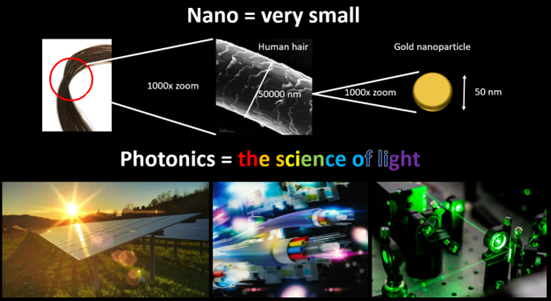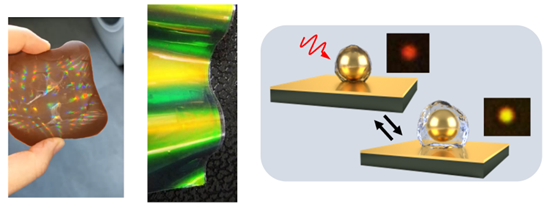What does NanoPhotonics do?
In the NanoPhotonics Centre, we use light and tiny structures of metal to see objects one hundred thousand times smaller than the width of a human hair. We use a science trick called ‘plasmonics’ to confine the light exactly where we need it. This helps us to see single molecules, create colorful displays, and build tiny electronic switches.
What will you see at the NanoPhotonics exhibit?
When gold is broken into tiny pieces it becomes very colorful. You might have come across such nano-gold when doing a covid lateral flow test or when looking through church windows. At our exhibit, you will use a spectrometer to separate light into its colours and explore how nanoparticles change them. A simple way to split light into its colours is by using gratings, which you may recognise from the security holograms on credit cards or banknotes. We will teach you a much more fun and delicious way, by nanostructuring chocolate! We will then show you how we use our tools to generate actual nano-pixels and colorful chameleon/stretchable coatings.
third panel adapted from Cormier et al. Adv. Opt. Mater. 2018
Exploding kittens? Old-school! We will teach you why you should definitely not put a pair of grapes in the microwave (they explode) and what happens if you put plasma balls close together. Come and explore. We will then show you how we use a similar effect in gold nanostructures to make light as small as the atomic scale. This helps us to see single molecules and how they interact with their environment. You will also learn a trick to see our gold nanostructures with an optical microscope.
second panel adapted from Khattak et al. PNAS 2019
What physics is used?
In this demonstration we will use optical microscopy, spectroscopy, and plasmonics.
Why is it useful?
Nanooptics enables us to manipulate light on the smallest length scales. This helps us to build sensors that can see single molecules, nanopixels for bright and colorful displays and components for the computers of tomorrow which may operate with light.



